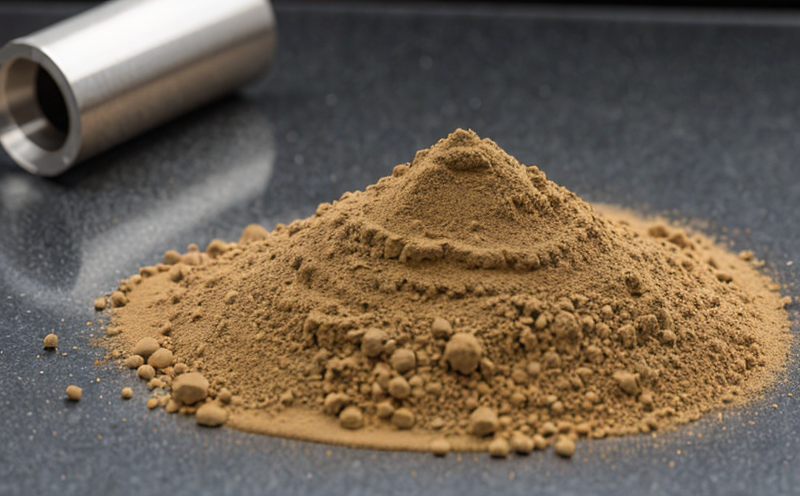ASTM D1238 Melt Flow Rate Testing
The ASTM D1238 method is a widely recognized standard used to measure the viscosity of thermoplastics under specified conditions. This test provides critical insights into the flow properties of polymers, which are essential for ensuring consistent performance across various manufacturing processes. By evaluating how easily materials can be extruded or molded, manufacturers can optimize their processing parameters and ensure product quality.
Understanding melt flow rate (MFR) is crucial in the Additive Manufacturing & 3D Printing sector as it directly impacts printability and post-processing steps like sintering or casting. For quality managers, compliance officers, R&D engineers, and procurement teams alike, ASTM D1238 testing offers a robust foundation for ensuring that raw materials meet stringent performance criteria.
During the MFR test, polymers are placed in a heated extruder barrel under constant pressure. A die with a specific orifice shape applies a controlled load to force the molten polymer through it at a fixed temperature. The weight required to maintain a specified flow rate is measured over a set time period (10 minutes). This value provides an accurate representation of the material's inherent viscosity.
The ASTM D1238 standard specifies different temperature and load combinations depending on the type of polymer being tested. For instance, Polyethylene (PE) typically uses 216°C/2.16 kgf, while Polystyrene (PS) might use 200°C/5 kgf. These conditions simulate real-world processing environments, ensuring that test results are directly applicable to industrial applications.
Proper specimen preparation is critical for obtaining reliable MFR values. Samples must be dried according to the specific polymer type and stored in a desiccator until testing begins. The sample should then be cut into small pieces and placed in the extruder, where it melts evenly before undergoing the flow test.
Instruments used for ASTM D1238 include rheometers equipped with precise temperature control capabilities and digital load cells that measure force accurately during the extrusion process. Data is collected electronically and analyzed to determine compliance with industry standards such as ISO 1133, which closely aligns with ASTM D1238.
Accuracy in MFR testing ensures consistent material performance throughout production runs, reducing defects and improving overall yield rates. This translates into significant cost savings for manufacturers by minimizing wastage due to poor raw material quality or improper processing settings.
- Competitive Advantage: Reliable MFR data allows companies to innovate more efficiently by identifying optimal process conditions early in the development cycle, leading to faster time-to-market for new products.
- Improved Quality Control: Consistent MFR measurements enable tighter control over manufacturing processes, resulting in higher-quality end products that meet customer expectations consistently.
- Better Resource Management: Accurate MFR testing helps minimize waste by ensuring only suitable materials are used for each application, optimizing material usage and reducing environmental impact.
In summary, ASTM D1238 melt flow rate testing plays a vital role in additive manufacturing and 3D printing processes. Its ability to provide precise information about polymer flow behavior under controlled conditions makes it an indispensable tool for ensuring consistent quality across all stages of production.
Why It Matters
The importance of ASTM D1238 testing cannot be overstated, especially in the context of additive manufacturing and 3D printing. The flow properties of thermoplastics significantly influence their suitability for different applications within this rapidly evolving field.
For quality managers and compliance officers, accurate MFR measurements ensure adherence to regulatory requirements while maintaining high standards of product integrity. Compliance with international standards like ISO 1133 is essential for global market entry and ensures customer satisfaction.
R&D engineers benefit greatly from precise MFR data when developing new materials or optimizing existing ones. By understanding how changes in molecular weight distribution affect flow behavior, researchers can tailor formulations to meet specific performance needs more effectively.
Procurement teams rely on consistent MFR values provided by suppliers as part of their quality assurance protocols. Ensuring that incoming raw materials consistently meet desired specifications helps maintain supply chain stability and reduces risks associated with variability in incoming parts or components.
In essence, ASTM D1238 testing serves as a cornerstone for ensuring reliable performance across various additive manufacturing processes. Its role extends beyond mere quality control; it facilitates innovation by providing essential insights into material behavior under realistic conditions.
Environmental and Sustainability Contributions
The environmental impact of materials plays an increasingly important role in modern manufacturing practices. By leveraging ASTM D1238 melt flow rate testing, companies can make informed decisions about the sustainability of their raw materials. Understanding how different polymers perform under specified conditions allows manufacturers to choose those that offer both excellent performance and minimal ecological footprint.
For instance, choosing biodegradable or recycled content polymers with appropriate MFR values ensures they will melt properly during processing without compromising product quality. This approach not only reduces reliance on virgin resources but also aligns with growing consumer demand for eco-friendly products.
In addition to supporting sustainable practices, accurate MFR testing contributes to waste reduction efforts by enabling more efficient use of raw materials. With precise knowledge of material flow properties, manufacturers can optimize extrusion rates and minimize scrap generation during production processes.
Furthermore, ASTM D1238 data helps identify opportunities for improving energy efficiency within manufacturing operations. By selecting polymers with optimal melt flow characteristics, companies can reduce heat input requirements without sacrificing product quality or functionality.
The broader implications of these efforts extend beyond individual organizations to positively influence industry trends toward greater sustainability and environmental responsibility. As more businesses adopt best practices like those facilitated by ASTM D1238 testing, we can expect to see significant advancements in green manufacturing techniques that benefit both the environment and society as a whole.





